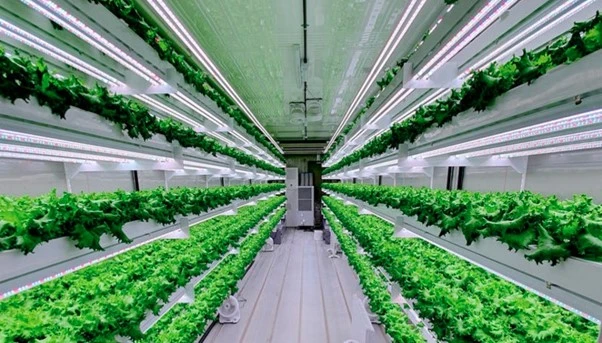Hydroponics in India: Cultivating a Greener Future with Innovative Farming

Strong 8k brings an ultra-HD IPTV experience to your living room and your pocket.
Hydroponic farming is rapidly gaining momentum in India, offering a revolutionary approach to agriculture. With the country’s ever-growing population and the challenges posed by traditional farming methods, hydroponics presents a viable solution for sustainable, efficient, and productive farming. This method allows crops to grow without soil, using nutrient-rich water, and is proving to be an ideal farming technique for urban areas and land-scarce regions.
What is Hydroponic Farming?
Hydroponic farming in India involves growing plants in a water-based solution, with the roots submerged in a nutrient-rich mixture. This method eliminates the need for soil and allows farmers to control the nutrient levels, pH, and other factors that influence plant growth. Hydroponic farming has gained popularity due to its efficiency in water usage and its ability to produce high yields in a small area.
The Growing Popularity of Hydroponics in India
As urbanization increases and arable land becomes limited, hydroponics in India is being explored as an alternative farming method. It is especially beneficial in regions with poor soil quality or areas where conventional farming is difficult due to environmental factors. Cities such as Bangalore, Delhi, and Mumbai are leading the charge in hydroponic farming due to the need for locally grown, fresh produce.
Hydroponics and Sustainability
One of the main advantages of hydroponics is its sustainability. With water scarcity becoming a significant issue in India, hydroponic farming uses up to 90% less water compared to traditional soil-based farming. Moreover, it eliminates the need for harmful pesticides and herbicides, contributing to healthier crops and a safer environment. Hydroponics offers a more eco-friendly alternative to conventional farming practices, making it an attractive option for sustainable agriculture in India.
Is Hydroponic Farming Profitable in India?
The question on every aspiring farmer’s mind is whether hydroponic farming is profitable in India. The answer depends on various factors, including the scale of the farm, the crops grown, and the region’s market demand. While setting up a hydroponic farm may require a significant initial investment, the returns can be high due to the rapid growth cycles of plants and the potential for year-round cultivation.
Crops such as lettuce, tomatoes, and herbs thrive in hydroponic systems, and these high-value crops are in demand in urban markets. The ability to grow these crops in smaller spaces and with fewer resources makes hydroponic farming an attractive business model for farmers. While the question of profitability may vary, hydroponic farming presents a promising opportunity for those willing to invest in innovative agriculture.
Cost of Setting Up a Hydroponic Farm in India
Setting up a hydroponic farm in India involves significant upfront costs, but the returns can justify the investment. The cost of setting up a hydroponic farm depends on the type of system (e.g., deep water culture, nutrient film technique, or aeroponics) and the scale of the operation. On average, setting up a hydroponic farm in India can cost anywhere between INR 10-15 lakhs per acre, including infrastructure, equipment, and operational costs.
Cost of 1 Acre Hydroponic Farm in India
The cost of 1 acre hydroponic farm in India varies based on factors like the crop selection, type of hydroponic setup, and location. A small-scale farm may cost around INR 10 lakhs, but for larger, more advanced systems with high-tech automation, the cost can rise significantly. However, given the high yield potential, these initial investments can be recovered over time.
Hydroponic Farming at Home in India
Hydroponic farming is not limited to commercial ventures. Many urban dwellers in India are now turning to hydroponics as a way to grow fresh produce at home. Hydroponic farming at home in India allows individuals to grow vegetables and herbs in limited spaces such as balconies or rooftops. Small-scale setups can be purchased or DIY systems can be built with affordable materials, making hydroponics accessible for even the most space-constrained homes.
The Future of Hydroponics in India
Hydroponics in India is poised for significant growth in the coming years. As awareness about sustainable farming practices increases and urban agriculture becomes more popular, hydroponics will play a crucial role in ensuring food security while minimizing the environmental impact of conventional farming. With continued innovation and support from both the government and private sectors, hydroponic farming could shape the future of Indian agriculture, cultivating a greener and more sustainable future.
In conclusion, hydroponic farming in India offers an innovative solution to the challenges of traditional agriculture. While the initial costs may be high, the long-term benefits of high yields, water conservation, and sustainable practices make hydroponics a promising option for both urban and rural farmers. Whether at a commercial scale or in the comfort of one’s home, hydroponic farming is truly a step toward cultivating a greener future in India.
Also, Read: What Is Calcium Nitrate Fertilizer? Chemical Structure, Benefits, and Disadvantages
Note: IndiBlogHub features both user-submitted and editorial content. We do not verify third-party contributions. Read our Disclaimer and Privacy Policyfor details.







